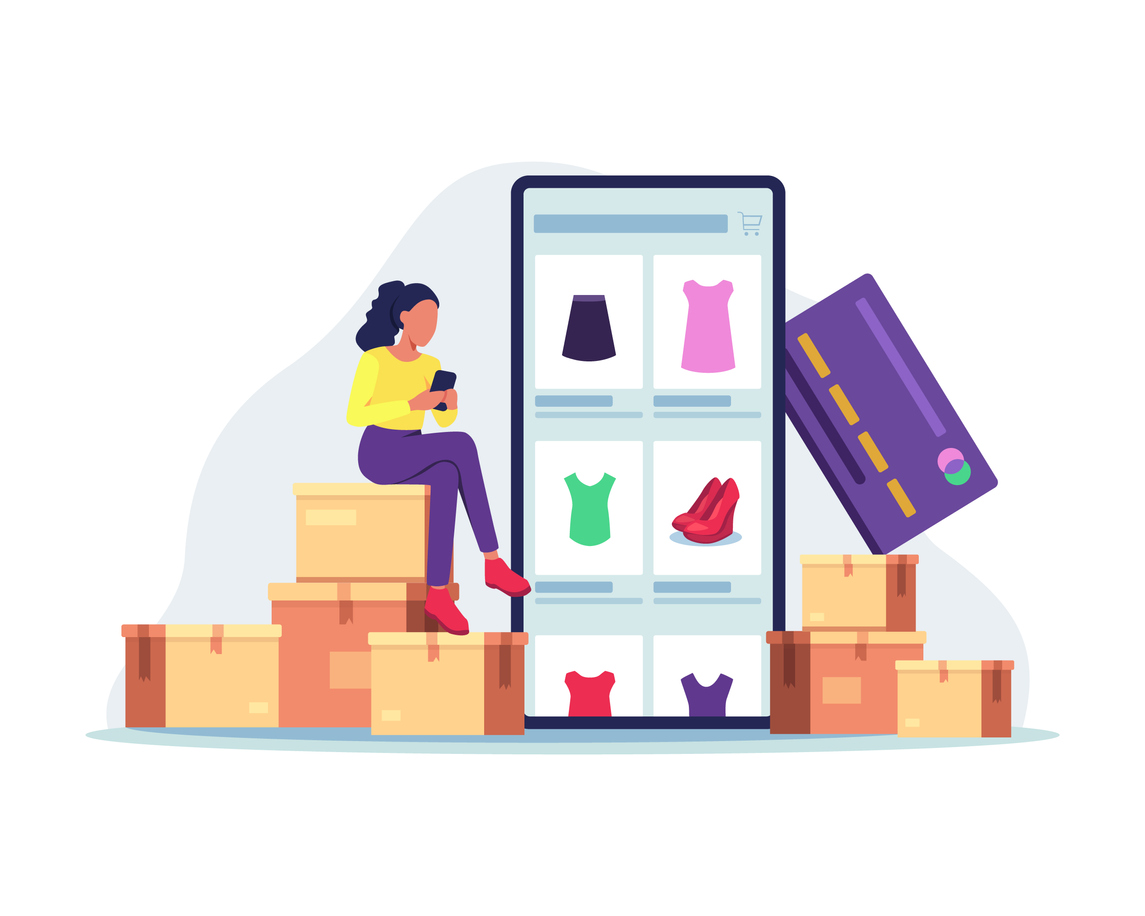‘The most successful brands are the ones who truly understand their customers.’
Although that sounds fairly straightforward, getting the formula right every time requires some serious dedication. It’s one thing to grab the attention of those all important shoppers but in the world of ecommerce, if you’re not driving traffic to your website and ultimately converting those baskets, you’ll be falling short of the potential your online store could be reaching.
So how do you effectively engage your customers? One way to make sure you’re maximising your reach is to increase personalisation – whether that’s on your ecommerce store itself or in your marketing activity. With so many options for personalisation available to you as a merchant, it can be daunting to know which channel to focus on first.
Here, we break down a few of the ways in which you can treat every customer like a valued shopper to increase cart totals, conversion rates and drive repeat purchases.

What Is Personalisation?
On a very basic level, personalisation is pulling data in, specific to your customer. It can be as simple as having their first name and birthday in your database so you can tailor marketing copy and special offers, to the more advanced option of tracking their purchase history, browsing habits and previous interactions with your store to dynamically deliver content and product recommendations.
When you’re starting to implement personalisation into your content and marketing strategy, it’s important that you get the basics right. That’s because most consumers expect some level of personalisation from brands – a recent survey in the US said customers are 80% more likely to buy from a brand which shows some level of tailored content to them so it pays to make sure your strategy works for your industry and brand.

Why You Should Be Using Personalisation
Which leads us onto our next point – those shopping online expect you to understand what they want. The growth of ecommerce means that now more than ever, competition is fierce. Customers are less likely to be loyal to brands simply because they’ve shopped with them on a previous occasion; now, there are so many factors that come into play when it comes to repeat custom – from free delivery, simple returns processes and lower, comparable prices to loyalty schemes and frequent discounts.
But if you’ve got all of these boxes ticked, personalising your customers’ experience could be the thing that ultimately keeps them coming back. A recent survey by Segment found that:
- 52% of consumers would share personal data in exchange for product recommendations
- 53% of consumers would do the same for personalised shopping experiences
- 57% of consumers are willing to share personal data in exchange for personalised offers or discounts
Although constraints on how data is processed and stored are tighter than ever, it pays to make sure you’re using the data your customers have chosen to share with you, effectively and efficiently.

Getting Personalisation Right
If you’d like to increase your personalisation with your marketing strategy, it’s important to understand which channels you can maximise and how you’re currently using them. For example, email marketing is a perfect opportunity to really dig down into your customers habits and needs but it will require a different strategy to a personalised homepage on your ecommerce site.
Create a list of the ways in which you’d like to explore personalisation so a detailed, individual approach can be formulated for each avenue – group marketing and content into one column and website changes into another, and then break them down further based on the strengths of the platform you’re working on and your overall online goals.
So How Can I Personalise My Ecommerce Store?

- Use Product-detail page (PDP) recommendations – Using this technique on your product pages, you can show your customers similar or complementay products to the ones they’ve already viewed or searched for. This has been proven to be one of the most effective ways to increase average order values and conversion rates so is a must-have on ecommerce stores
- Create a tailored homepage – If you have a customer shopping with you who has visited before or is already logged into their account with you, tailoring their homepage to display relevant content is a huge plus. Whether you’re a multi-vendor store who can show them their favourite brands or you could display their favourite fashion content based on certain characteristics, tailoring this first step will reduce frustration due to time spent searching for products and means that overall distractions are reduced
- Continuous shopping suggestions – This is similar to the first technique but can be extremely powerful on your checkout or basket pages. Whereas big brands such as Netflix have created so much of their success from recommending similar options to what you’ve just viewed, by placing prompts to ‘continue shopping’ for complimentary or higher priced products on your basket or checkout pages, customers could be more likely to carry on browsing and have ‘one last look.’
- Create personalisation guides – Dependant on your industry and brand, creating personalised guides can leverage huge conversions. Already a tactic employed by some of the larger high street fashion retailers, you can ask your customer to provide you with specific product related data so you can tailor what they’re shown, down to the size of the item or clothing, or colour of make-up. For example, if you have a dress available in a size 12, showing this to a customer who you already know buys that size could increase conversion rates significantly
- Tailor your search – A search bar which fails to understand exactly what you’re looking for is a huge source of frustration when shopping online, so if you can make yours as intelligent as possible, you’re more likely to secure that sale. Does a particular customer search for a brand or product regularly? Can your search be predictive so options appear quickly, rather than after pressing enter?
- Take care setting up your abandoned cart emails – A simple email which can be sent to a customer after they’ve clicked away from your ecommerce store could be the difference between a sale or not. Abandoned cart emails are fairly common but if you can personalise them further by adding in simple details like their name or calculating the shipping cost to their location and then offering a discount, you could just entice them back to the checkout
- Time retargeting ads for when customers are most likely to convert – If you’re running re-targeting ads via Google or social media, it’s important to time these right. You’re much more likely to convert a visitor within 7 – 14 days after they’ve visited your store so make sure you’re concentrating your budget effectively. If you’re using this data for future campaigns, it can still be hugely powerful in encouraging previous site visitors to head back to your online store





